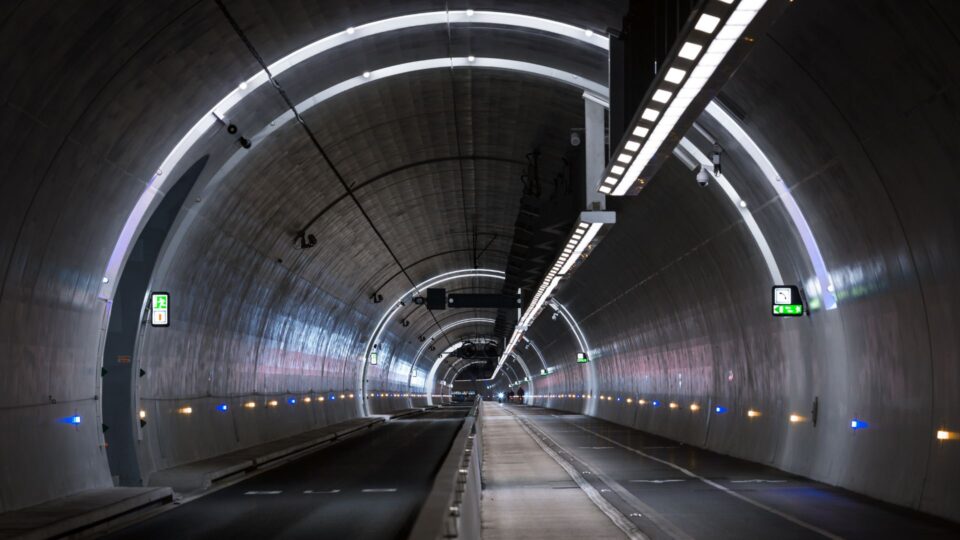There are many risk factors for tunnelling in the construction industry – from untrained or unprofessional workers to insufficient safety awareness. Are your tunnelling practices safe and compliant with industry standards?
According to Worksafe QLD, 24 fatalities were recorded in the construction industry in 2021.
Keep reading as we discuss the risk factors for underground and tunnelling construction and the best practices and safety measures to mitigate these risks.
What is tunnelling in the construction industry?
Tunnelling in the construction industry describes excavation methods used to create underground structures. Tunnelling is generally used to develop transport or utility passageways underground.
Tunnelling processes typically involve drill and blast methods and Tunnel Boring Machines (TBMs). Soil and rock materials must be removed precisely to ensure structural integrity and support for the underground structure.
What are the risk factors for tunnelling in the construction industry?
To understand which steps to take to promote worker safety in tunnelling practices, you should first know the risk factors. Below are the risk factors present in a construction tunnel.
Occupational lung hazards
Tunneling practices produce high levels of dust, dirt, and contaminants in the air from drill and blast methods. The pollutants, if not appropriately extracted, can make their way into workers’ lungs. This can lead to several health complications including chronic obstructive pulmonary disease, lung cancer, and aggravated asthma.
Unskilled and untrained workers
In such a hazardous environment, ensuring that only highly skilled and highly trained workers can access the underground site is essential. Accidents can happen if workers are not trained in health and safety.
Utility interference
When tunnelling underground, there is the potential for construction to interfere with pre-existing utility structures – such as electrical supply lines and water supply lines. Interfering with these structures presents the risk of severe flooding and electrocution.
Groundwater ingress
An unexpected water flow can cause increased hydrostatic pressure and flooding. The increased pressure in the tunnel could lead to structural collapse, so waterproofing measures and effective dewatering systems should be used.
Geotechnical instability
During underground construction, unforeseen conditions, such as unstable rock formations and faults, can risk tunnel stability and thus require additional support to prevent collapse.
Best practices for health and safety in a construction tunnel
To ensure compliance with health and safety regulations, and prevent worker injuries and fatalities, follow the best practices and considerations listed below.
Providing ventilation and extraction
Ventilation and extraction are two essential components in underground construction safety. They help to provide air circulation and reduce the presence of contaminants in the air to reduce occupational lung hazards. Here is why you need to invest in both extraction and ventilation systems:
- Filtration Fans – can capture and filter out dust particles and contaminants to prevent inhalation by workers. These fans should be placed close to any drill and blast areas that produce dirt and debris.
- Extraction Fans – like Centrifugal Fans, allow air circulation to reduce air pockets which can cause heat, humidity, and dust to accrue in the air. Extraction fans also offer fresh air to ensure the underground space is oxygenated for worker health and productivity.

Using dewatering systems
Dewatering systems must be installed to ensure flooding and increased hydrostatic pressure do not lead to structural collapse. Well points, sumps, pumps, and filtration equipment should be installed to lower the amount of groundwater in the tunnel and prevent destabilisation.
Utility detection
Workers must use utility detection to identify underground pipelines, conduits, and cables. Ground penetrating radar and electromagnetic detection can locate any utilities underground. Utility records and maps can also assist with this process.
Training employees on health and safety practices
All employees on your tunnelling project should be well-versed in all health and safety regulations and codes of practice surrounding tunnelling. WorkSafe provides resources for training your employees on the best health and safety practices in the tunnelling industry.
Choose Fanquip for tunnelling ventilation solutions
Ventilation and structural considerations are the tunnelling construction workers’ most significant health and safety concerns. Investing in ventilation and extraction solutions and ensuring best practices are followed for construction processes can reduce risk and ensure a safe and productive working environment.
Fanquip is an industry leader in providing ventilation solutions across various industries. Our team of experienced ventilation experts can discuss your tunnelling project and provide ventilation solutions to ensure safety compliance. Contact us today for advice regarding your tunnelling project.
